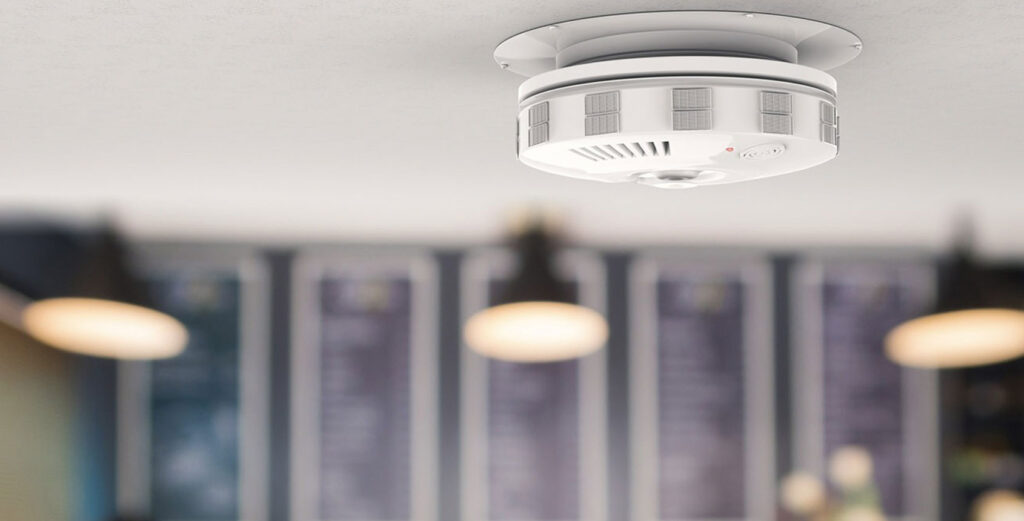
Metro Retrofitting will inspect and install alarms as needed to comply with state law for proper placement in homes, apartments and condos.
New California state law (SB 183), effective January 1, 2011, creates a requirement that carbon monoxide (CO) alarms be placed in proper places within dwelling units throughout the state. The law creates disclosure requirements for sellers with respect to carbon monoxide (CO) monitors during property transactions, but
absence of CO detectors does NOT preclude sale or transfer of the property.
Metro Retrofitting will inspect and install alarms as needed to comply with state law for proper placement in homes, apartments and condos.
New California state law (SB 183), effective January 1, 2011, creates a requirement that carbon monoxide (CO) alarms be placed in proper places within dwelling units throughout the state. The law creates disclosure requirements for sellers with respect to carbon monoxide (CO) monitors during property transactions, but
absence of CO detectors does NOT preclude sale or transfer of the property.
Metro Retrofitting will inspect and install alarms as needed to comply with state law for proper placement in homes, apartments and condos.
New California state law (SB 183), effective January 1, 2011, creates a requirement that carbon monoxide (CO) alarms be placed in proper places within dwelling units throughout the state.
The law creates disclosure requirements for sellers with respect to carbon monoxide (CO) monitors during property transactions, but
absence of CO detectors does NOT preclude sale or transfer
of the property.




The law covers every “dwelling unit intended for human occupancy” which means single-family housing, factory-built homes, condominiums, motels, hotels, dormitories, and each unit in “multiple-unit buildings.” It applies to every dwelling unit that has “a fossil fuel burning heater or appliance, fireplace, or an attached garage.” “Fossil fuel” means “coal, kerosene, oil, wood, fuel gases, and other petroleum or hydrocarbon products, which emit carbon monoxide as a byproduct of combustion.”
Carbon monoxide alarms must be installed in existing single-family dwelling units in California no later than July 1, 2011. All other existing dwelling units must have proper CO alarms no later than January 1, 2013.
Carbon monoxide alarms must be designed to detect carbon monoxide and produce a “distinct, audible alarm.” The device may be battery-powered, a plug in, or hard-wired with a battery backup. It may be combined with a smoke detector, but must emit a distinct alarm to signal the presence of dangerous CO levels. The devices must be certified by the State Fire Marshall.
Carbon monoxide is a colorless and odorless gas produced when any fuel is incompletely burned because of insufficient oxygen. Wood fires and charcoal grills produce large amounts of CO. Malfunctioning heating systems also produce CO.
The law covers every “dwelling unit intended for human occupancy” which means single-family housing, factory-built homes, condominiums, motels, hotels, dormitories, and each unit in “multiple-unit buildings.” It applies to every dwelling unit that has “a fossil fuel burning heater or appliance, fireplace, or an attached garage.” “Fossil fuel” means “coal, kerosene, oil, wood, fuel gases, and other petroleum or hydrocarbon products, which emit carbon monoxide as a byproduct of combustion.”
Carbon monoxide alarms must be installed in existing single-family dwelling units in California no later than July 1, 2011. All other existing dwelling units must have proper CO alarms no later than January 1, 2013.
Carbon monoxide alarms must be designed to detect carbon monoxide and produce a “distinct, audible alarm.” The device may be battery-powered, a plug in, or hard-wired with a battery backup. It may be combined with a smoke detector, but must emit a distinct alarm to signal the presence of dangerous CO levels. The devices must be certified by the State Fire Marshall.
Carbon monoxide is a colorless and odorless gas produced when any fuel is incompletely burned because of insufficient oxygen. Wood fires and charcoal grills produce large amounts of CO. Malfunctioning heating systems also produce CO.